Staging Corn Growth
Field Facts written by Pioneer Agronomy Sciences
Field Facts written by Pioneer Agronomy Sciences
Growth stages of corn are divided into vegetative stages (V) and reproductive stages (R) as outlined in Table 1. Subdivisions of the V stages are designated numerically as V1, V2, V3, etc. through V(n), where (n) represents the last leaf stage before VT for the specific hybrid under consideration. The first and last V stages are designated as VE (emergence) and VT (tasseling). The number of leaves (n) will fluctuate with hybrid and environment differences. The vegetative stages and six subdivisions of the reproductive stages are designated numerically with their common names in Table 1.
Table 1. Growth and development stages.
| Vegetative Stages | Reproductive Stages |
|---|---|
| VE = emergence | R1 = silking |
| V1 = first leaf collar | R2 = blister |
| V2 = second leaf collar | R3 = milk |
| V3 = third leaf collar | R4 = dough |
| V(n) = nth leaf collar | R5 = dent |
| VT = tasseling | R6 = maturity |
Review a larger image here or by clicking on the above illustration.
Each leaf stage is defined according to the uppermost leaf whose leaf collar is visible. The first part of the collar that is visible is the back, which appears as a discolored line between the leaf blade and leaf sheath. The characteristically oval-shaped first leaf is a reference point for counting upward to the top visible leaf collar as demonstrated in Figure 1.
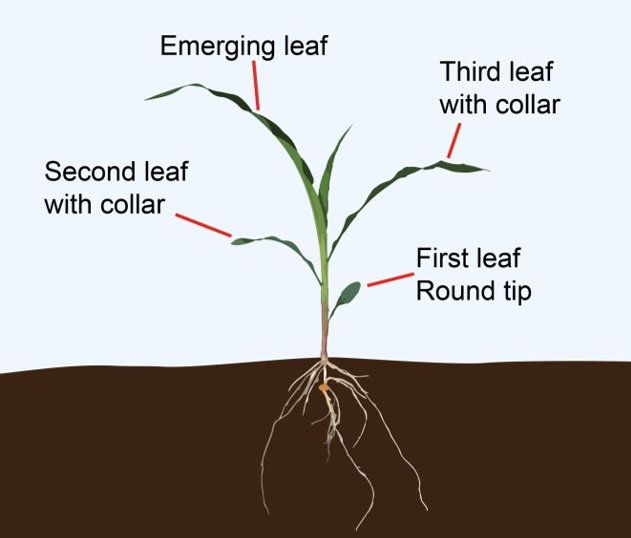
Figure 1. V3 corn plant.
Beginning at about V6 increasing stalk and nodal root growth combine to tear the small lowest leaves from the plant. Degeneration and eventual loss of the lowest leaves results. To determine the leaf stage after lower leaf loss, split the lower stalk lengthwise (Figure 2) and inspect for the internode elongation. The first node above the first elongated stalk internode generally is the fifth leaf node. This internode is usually a little less than ½ inch in length. This fifth leaf node may be used as a replacement reference point for counting to the top leaf collar.
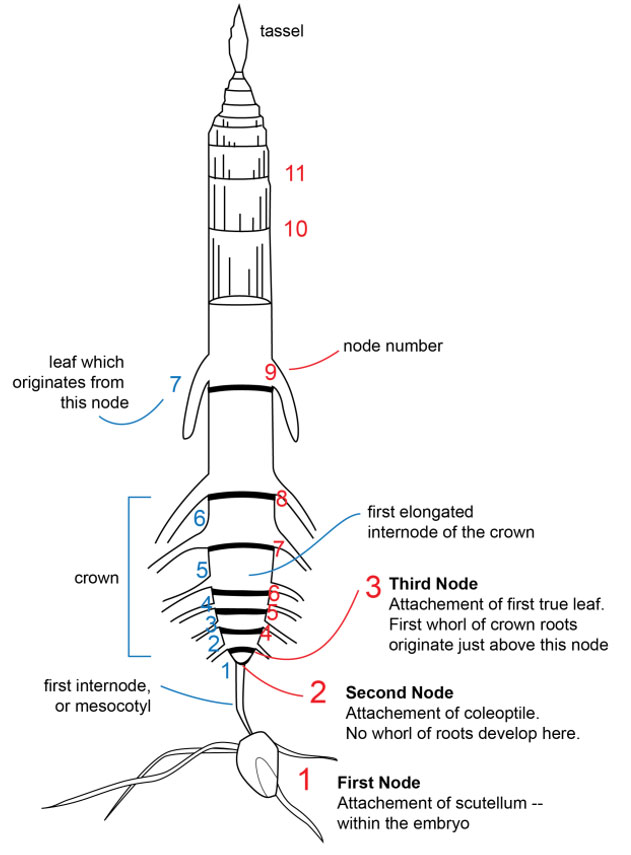
Figure 2. Staging after V6.
After silks are visible, staging is based on examination of kernels from the middle of the primary ear. The kernels change in several significant ways following fertilization that are used to differentiate between stages. The color will change from white to deep yellow, moisture content will decrease, the embryo will develop, and starch will accumulate.
Some herbicide labels refer to the stage of development of corn based on plant height or leaf stage. Corn height is generally defined as “free standing” or the height of the arch of the highest leaf that is at least 50% developed. Corn height is less accurate than leaf number in determining growth stage.
Other staging methods include leaf tip and horizontal or “droopy” leaf. The leaf tip method is based on the uppermost leaf tip emerged from within the whorl. The horizontal leaf method is based on the number of leaves with 40% to 50% of their leaf area exposed, along with the tip of the uppermost leaf point below horizontal.
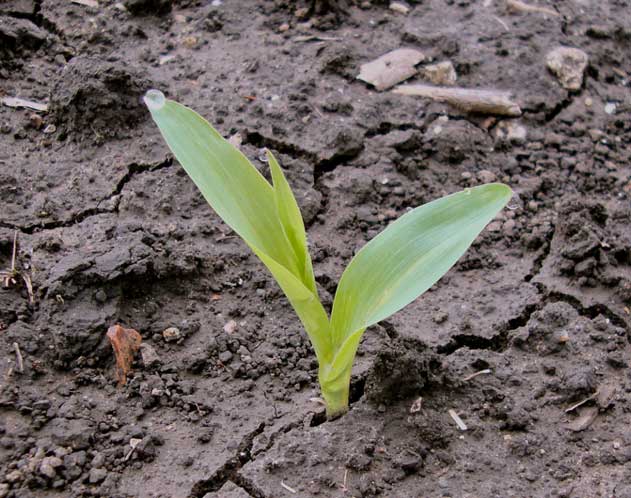
Figure 3. Corn plant at the V1 growth stage.
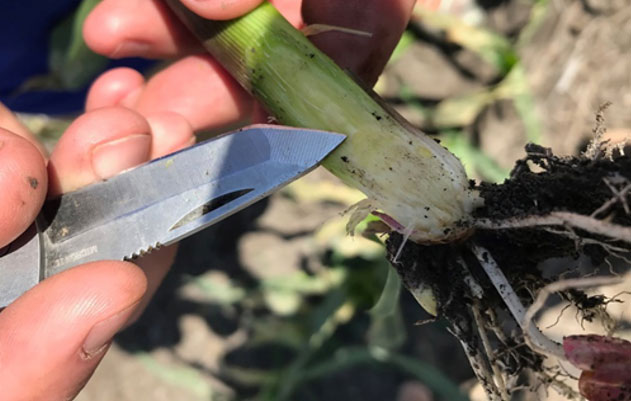
Figure 4. Corn split in half showing the growing point above ground.
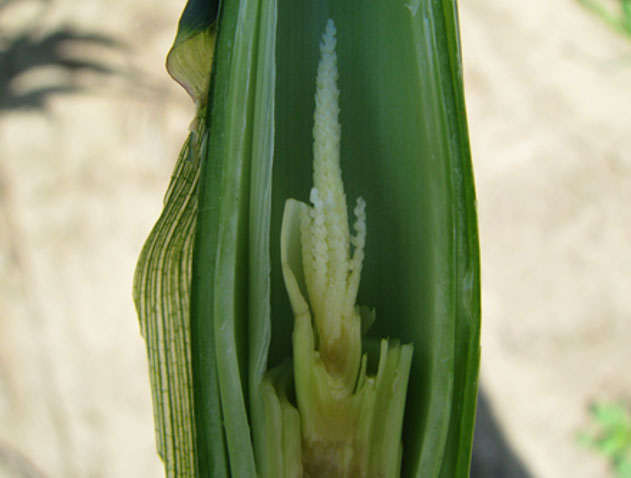
Figure 5. Dissected corn plant showing immature tassel inside the stalk at V8.
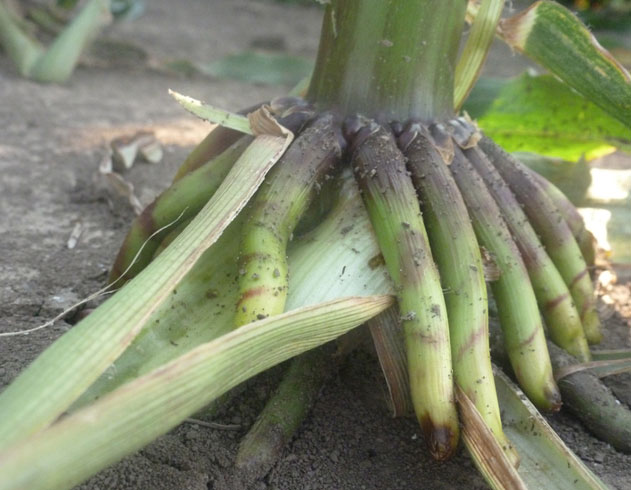
Figure 6. Brace root development during the late vegetative stages.
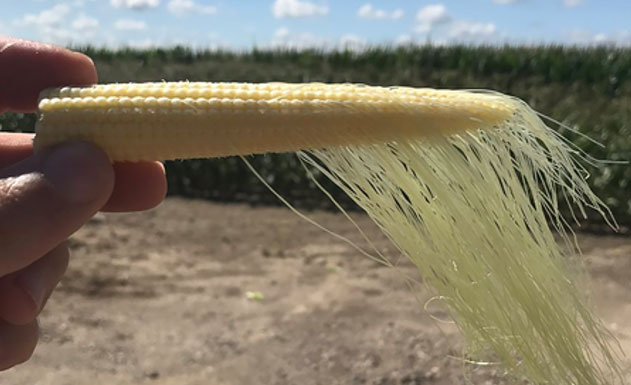
Figure 7. Ear at R1 with silks.
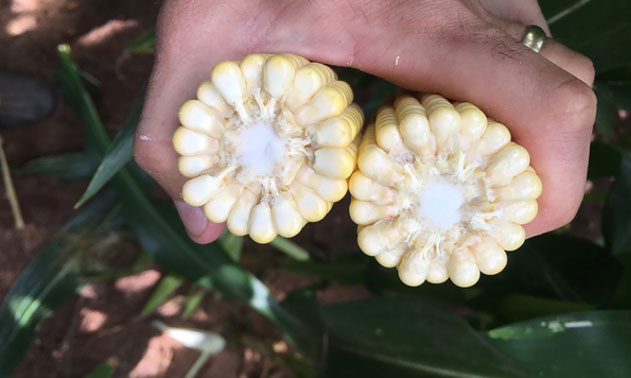
Figure 8. Ear at milk stage with yellowing kernels and milky white fluid.
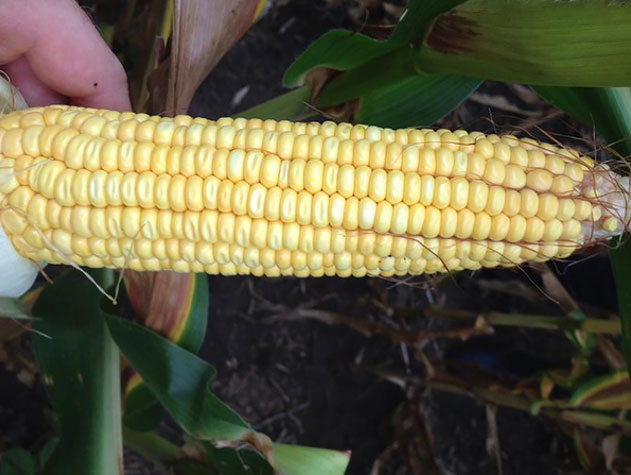
Figure 9. Corn ear at early dent stage.
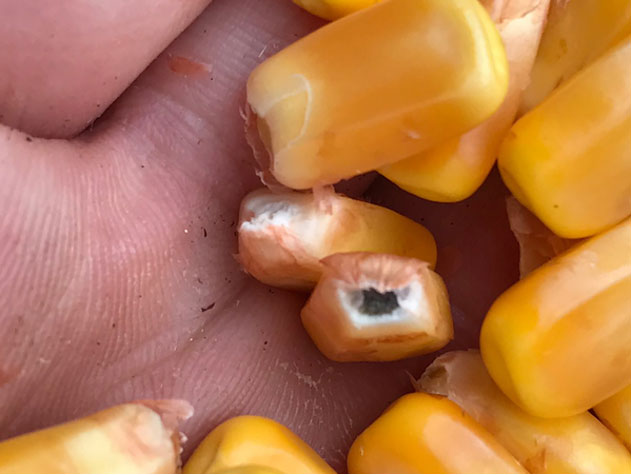
Figure 10. Kernel at maturity showing black layer.
Table 2. R5 to R6 kernel stages, grain moisture, and GDUs remaining to maturity.
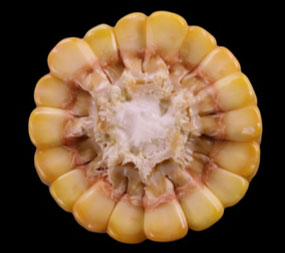
Beginning Dent
Milk line starting to appear at top of kernel.
Grain Moisture: ~50-55%.
~400 GDUs remaining to maturity.

1/4 milk line
Grain Moisture: ~45-50%.
~300 GDUs remaining to maturity.

1/2 milk line
Grain Moisture: ~40-45%.
~200 GDUs remaining to maturity.
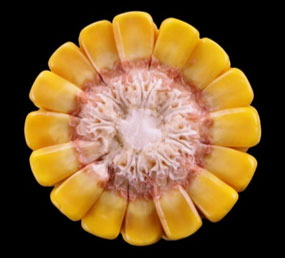
3/4 milk line
Grain Moisture: ~35-40%.
~100 GDUs remaining to maturity.
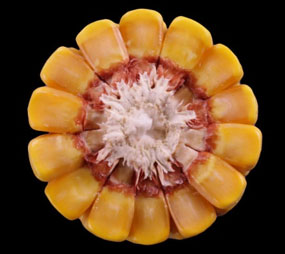
Black layer or "no milk line"
Grain Moisture: ~28-32%.
0 GDUs remaining to maturity.
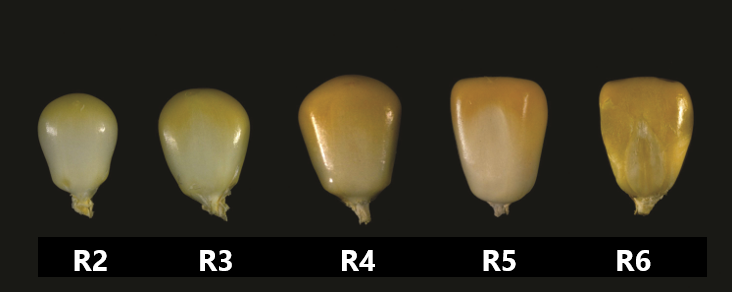
Emergence may occur as rapidly as 4 or 5 days after planting in warm moist soil or may take 3 weeks or more in cool soils. A new leaf will appear about every 3 days during early growth, while later leaves developing during warmer conditions may appear in 1 to 2 days. Full season hybrids in the central Corn Belt typically can produce 21 to 22 leaves. Earlier maturing hybrids will produce fewer leaves. The rate of development after pollination is given in Table 2. Bear in mind that development may be faster than suggested here under higher than normal temperatures or slower under lower than normal temperatures.
Table 3. Days after pollination for reproductive growth stages.
| Kernel Growth Stage | Days After Pollination |
|---|---|
| Pre-blister | 9 |
| Blister | 13 |
| Early Milk | 17 |
| Milk | 21 |
| Late Milk | 25 |
| Soft Dough | 30 |
| Early Dent | 35 |
| Dented | 40 |
| Late Dent | 45 |
| Half Milk Line | 50 |
| Mature | 55 |
Stage VE
Stage V3
Stage V6
Stage V9
Stage VT
Stage R1
Stage R2
Stage R5
Stage R6
Stay connected to your Pioneer agronomist with our Walking Your Fields e-newsletter and other communications. It’s your go-to source for timely agronomic information to help add value to your farm management strategy.
Subscribe Now
The foregoing is provided for informational use only. Please contact your Pioneer sales professional for information and suggestions specific to your operation. Product performance is variable and depends on many factors such as moisture and heat stress, soil type, management practices and environmental stress as well as disease and pest pressures. Individual results may vary.
Pioneer® brand products are provided subject to the terms and conditions of purchase which are part of the labeling and purchase documents.
